Hardwood Lumber Grades Explained
- August 16, 2024
- 0 comment
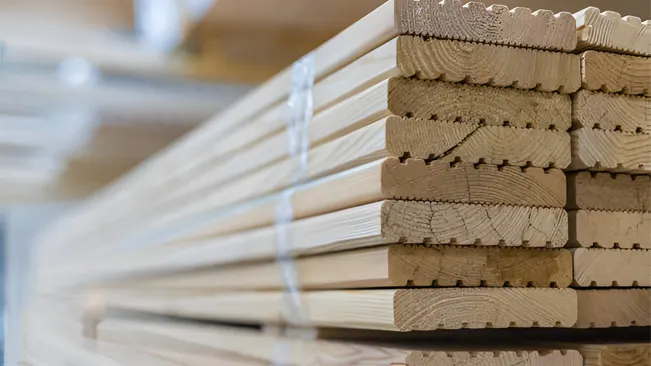
Hardwood lumber grades are a complex system that categorizes boards based on their quality, appearance, and suitability for various applications. The National Hardwood Lumber Association (NHLA) has established a set of grading rules that are widely used in the United States and form the basis for grading export lumber.
The purpose of lumber grading is to provide a consistent language for buyers and sellers to communicate about the quality and value of hardwood lumber. The grade of lumber purchased by a manufacturer will determine both the cost and waste factor that is achieved.
The National Hardwood Lumber Association (NHLA) Grading System
The grading of hardwood lumber is regulated by the National Hardwood Lumber Association (NHLA), which established the grading rules that are widely accepted in the industry. The NHLA grading system is designed primarily for the U.S. hardwood lumber industry, but it is also recognized internationally due to its clarity and precision.
The NHLA grading system is focused on the potential yield of clear cuttings from a board. A clear cutting refers to a portion of the board that is free from defects like knots, checks, splits, and stains. The yield is expressed as a percentage, representing the portion of the board that can be used without defects. The grading system also takes into account the minimum board size and the minimum size of the clear cuttings that can be obtained.
Detailed Breakdown of Hardwood Lumber Grades
Each hardwood lumber grade has distinct characteristics, and understanding these nuances can significantly impact your project outcomes. Here is a detailed look at the most common grades:
| Grade | Description | Minimum Board Size | Minimum Clear Cutting Size | Yield | Applications |
|---|---|---|---|---|---|
| FAS (First and Second) | The highest grade, FAS boards have the most usable clear wood. Suitable for high-end furniture and cabinetry. | 6 inches x 8 feet | 4 inches x 5 feet or 3 inches x 7 feet | 83 1/3% to 100% | Fine furniture, high-end cabinetry, interior woodwork, architectural millwork |
| FAS One Face (F1F) | One side meets FAS requirements; the reverse side meets No. 1 Common requirements. Often used where one side of the wood is exposed. | 6 inches x 8 feet | 4 inches x 5 feet or 3 inches x 7 feet | 83 1/3% (one side) | Doors, paneling, furniture where one side is exposed |
| Select | Similar to F1F, but with a minimum board size requirement of 4 inches x 6 feet. Ideal for applications where only one side of the wood is visible. | 4 inches x 6 feet | 4 inches x 5 feet or 3 inches x 7 feet | 83 1/3% (one side) | Smaller furniture components, decorative moldings, fine joinery |
| No. 1 Common | The standard grade for most furniture, cabinetry, and flooring. Provides a good balance between appearance and cost. | 3 inches x 4 feet | 4 inches x 2 feet or 3 inches x 3 feet | 66 2/3% to 83 1/3% | Standard furniture, cabinetry, flooring, paneling |
| No. 2A Common | Typically used for products where appearance is less critical, like structural components. | 3 inches x 4 feet | 3 inches x 2 feet | 50% to 66 2/3% | Framing, hidden furniture parts, rustic furniture, painted woodwork |
| No. 2B Common | Used for low-end applications, including crates, boxes, and pallets. Often includes boards with more defects. | 3 inches x 4 feet | 3 inches x 2 feet | 50% to 66 2/3% | Boxes, crates, subflooring, industrial applications |
| No. 3A Common | Contains boards with larger defects and is generally used in construction where the wood will not be visible. | 3 inches x 4 feet | 1 1/2 inches x 2 feet | 33 1/3% to 50% | Pallets, crates, non-visible construction components |
| No. 3B Common | The lowest grade, often used for non-aesthetic purposes where strength is more important than appearance. | 3 inches x 4 feet | 1 1/2 inches x 2 feet | 25% to 33 1/3% | Rough framing, shipping crates, low-cost construction projects |
Further Insights into Hardwood Lumber Grades
Understanding the nuances of each grade can make a significant difference in the quality and cost-effectiveness of your woodworking projects. Here are some additional insights:
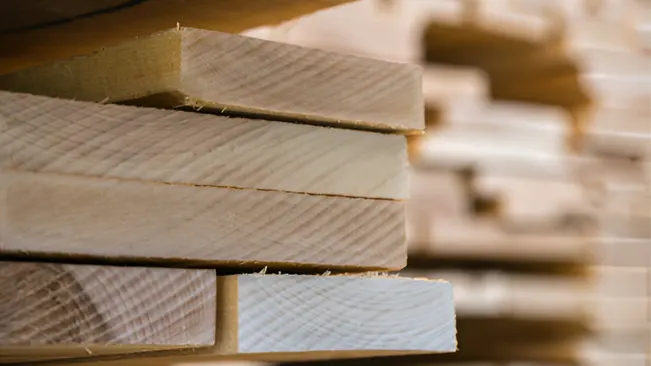
- FAS (First and Second): FAS lumber is often preferred by artisans and furniture makers who require large, defect-free pieces of wood. The high yield of clear wood from FAS boards ensures minimal waste, making it an efficient choice despite its higher cost. This grade is also commonly used in the production of architectural moldings and high-end interior woodwork, where the appearance of the wood is paramount.
- FAS One Face (F1F) and Select: These grades are particularly useful when the finished product only needs one visually appealing side. For instance, in furniture making, F1F or Select grade boards might be used for table tops or cabinet faces where only one side is visible, allowing for cost savings without sacrificing aesthetics.
- No. 1 Common: Often referred to as the “workhorse” grade, No. 1 Common offers a practical balance of quality and affordability. It is frequently used in the production of mid-range furniture, flooring, and cabinetry. While No. 1 Common allows for more defects than FAS, these defects can often be worked around or incorporated into the design, especially in rustic or distressed styles.
- No. 2A and 2B Common: These grades are valuable for projects where the wood’s structural properties are more critical than its appearance. They are often chosen for framing, subflooring, and other hidden structural components. Additionally, these grades are ideal for projects where the wood will be painted, as the paint can hide many of the defects that would otherwise be visible.
- No. 3A and 3B Common: These lower grades are typically used in industrial and construction settings where the wood’s appearance is of little importance. For example, No. 3A and 3B Common grades are often used in the manufacture of shipping crates, pallets, and rough framing. In these applications, the focus is on cost-effectiveness and structural integrity rather than aesthetic quality.
Tips for Selecting the Right Hardwood Grade
When selecting hardwood lumber, consider the following tips to ensure you choose the right grade for your project:

- Project Requirements: Consider the final application of the wood. If the wood will be visible, such as in furniture or cabinetry, higher grades like FAS or F1F might be necessary. For structural or hidden components, lower grades may suffice.
- Budget: Higher grades of hardwood lumber are more expensive due to the lower presence of defects and the higher yield of usable wood. Balance your budget against your quality requirements.
- Woodworking Skills: If you have the skill to work around defects or incorporate them into your design, you may find lower grades like No. 1 Common or No. 2A Common to be cost-effective choices.
- Waste Management: Higher grades like FAS offer more usable wood and less waste, which can be more economical in the long run, despite their higher upfront cost.
- Supplier Reputation: Purchase lumber from reputable suppliers who adhere to NHLA grading standards. This ensures that the wood you buy meets the expected quality.
Conclusion
Understanding hardwood lumber grades is fundamental to making informed decisions in woodworking and construction. The NHLA grading system provides a clear and consistent standard for evaluating lumber, helping you choose the right material for your specific needs.
By knowing the characteristics of each grade and their appropriate applications, you can ensure the success of your projects, whether you’re crafting fine furniture, constructing a building, or simply engaging in a woodworking hobby. With this knowledge, you can strike the perfect balance between quality, cost, and functionality, making the most of your hardwood investment.
Frequently Asked Questions
1. What is hardwood lumber grading?
Hardwood lumber grading is a system used to categorize wood based on its quality, appearance, and usability. This grading helps determine how much of the wood can be used without defects like knots or splits. Understanding these grades is important for selecting the right wood for your project.
2. Who sets the standards for hardwood lumber grades?
The National Hardwood Lumber Association (NHLA) sets the standards for hardwood lumber grades. The NHLA grading system is widely recognized in the industry and helps ensure consistency in how wood is evaluated, no matter where it is sourced or sold.
3. What does FAS mean in hardwood grading?
FAS stands for “First and Second,” and it represents the highest grade of hardwood lumber. FAS boards have the most usable, defect-free wood, making them ideal for high-quality furniture, cabinetry, and other projects where appearance is important.
4. What is the difference between FAS and F1F (FAS One Face)?
FAS One Face (F1F) is a grade where one side of the board meets the high standards of FAS, while the other side meets a lower grade, usually No. 1 Common. This grade is useful when only one side of the wood will be visible, allowing for some cost savings.
5. What is No. 1 Common grade used for?
No. 1 Common is a versatile grade that is often used in standard furniture, flooring, and cabinetry. It has more defects than FAS but still provides a good amount of clear, usable wood, making it a practical choice for many projects.
6. What are the lower grades of hardwood lumber, and what are they used for?
Lower grades like No. 2A Common, No. 2B Common, and No. 3A Common have more defects and are typically used in applications where appearance is less important. These include structural components, crates, pallets, and projects where the wood will be painted or hidden.
7. How do I choose the right grade of hardwood lumber for my project?
To choose the right grade, consider the final use of the wood. If the wood will be visible, like in furniture or cabinetry, you may want a higher grade like FAS or F1F. For structural uses or projects where defects won’t matter, lower grades like No. 1 Common or No. 2 Common might be more cost-effective.
8. Why is FAS lumber more expensive than other grades?
FAS lumber is more expensive because it has the least amount of defects and the highest yield of usable wood. This makes it more valuable for projects that require large, clear pieces of wood with a beautiful appearance.
9. Can I use lower grades of hardwood lumber for furniture making?
Yes, lower grades like No. 1 Common or even No. 2A Common can be used for furniture making, especially if you are creating a rustic look or if you are skilled at working around defects. These grades can be more affordable while still providing enough clear wood for many furniture projects.
10. What is the benefit of using higher-grade hardwood lumber?
Using higher-grade hardwood lumber, such as FAS, ensures that you have more clear, defect-free wood to work with, which can reduce waste and make your project easier to complete. It also gives your finished product a more polished and professional appearance, which is especially important for high-end furniture and cabinetry.
We hope this explanation of hardwood lumber grades has provided you with valuable insights into how to select the right wood for your projects, whether you’re working on fine furniture, cabinetry, or structural components. If you have any experiences or additional tips related to choosing lumber grades, please share them in the comments below.
Your input can help others make more informed decisions and contribute to a better understanding of this essential aspect of woodworking. Also, don’t forget to share this article with fellow woodworkers and enthusiasts to spread knowledge and enhance the conversation around choosing the best materials for your craft.


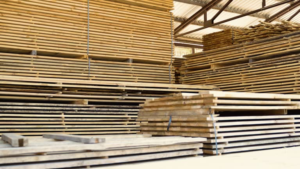
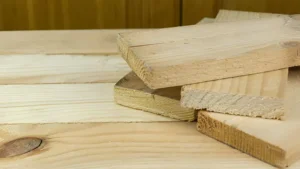

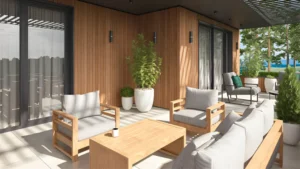
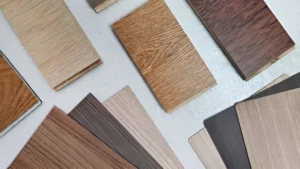




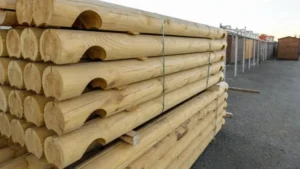
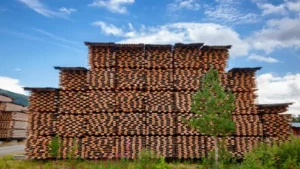

Leave your comment